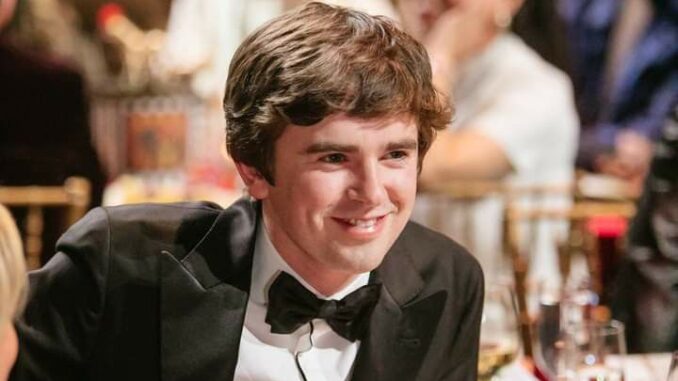
The Good Doctor may have wrapped its final chapter with Season 7, but its impact on fans and television alike is anything but over. From its emotional pilot to its controversial character exits and compelling medical cases, the series has delivered both triumphs and heartbreak across seven seasons.
Some years gave us unforgettable growth and standout performances, while others struggled with pacing or shifting focus. So, how does each season stack up when viewed as part of the bigger picture? Here’s a definitive (and slightly emotional) ranking of all seven seasons of The Good Doctor—from least effective to most exceptional.
7. Season 5 — The Identity Crisis Season
The Good Doctor’s fifth season was arguably its most uneven. With the sudden departure of showrunner David Shore (temporarily) and a pivot toward soapier storytelling, the show lost some of its core strengths. The focus on Shaun and Lea’s wedding planning took center stage—often at the expense of more meaningful medical drama.
While there were some touching moments, such as Shaun grappling with his grief after Dr. Glassman’s cancer scare reemerges, much of the season felt disconnected. Even the return of familiar characters couldn’t fully revive the emotional energy that had defined earlier years.
6. Season 6 — Ambition Without Balance
Season 6 delivered higher stakes, but at times at the cost of narrative consistency. It introduced a number of new characters and tried to juggle multiple arcs—relationship shifts, leadership transitions, and new interns—resulting in some storyline overload.
On the plus side, the show began exploring deeper hospital politics and professional challenges for Shaun. However, the tragic and unexpected death of Dr. Lim’s fiancé Nurse Villanueva left some fans reeling, while others felt it was a shocking twist that didn’t have enough emotional groundwork.
5. Season 7 — The Farewell Tour
The final season of The Good Doctor felt like a victory lap in many ways. With a shorter episode order and a clear ending in sight, the writers focused more on character resolutions than big medical arcs. Shaun and Lea’s journey into parenthood offered a quiet but touching close to their long-running story.
Still, some fans wished the finale carried more emotional weight or revisited more beloved characters from the past. Though it tied up loose ends, it didn’t hit the dramatic heights the show was capable of.
4. Season 4 — A Season of Transition
Following the intense COVID-themed opening episodes, Season 4 pivoted back to more traditional cases while introducing a new class of surgical residents. The season also had to recover emotionally after the shocking death of Dr. Melendez in the Season 3 finale.
This was a rebuilding year—new characters, new dynamics, and Shaun entering a more mature phase of his personal life. The love triangle between Shaun, Lea, and Carly was gone, and the show began anchoring itself in real emotional stakes again.
3. Season 2 — The Heart and the Struggle
Season 2 dove deeper into Shaun’s personal battles. His confrontation with Dr. Han, who doubted his surgical abilities, was a major storyline that tested his confidence and resolve. Meanwhile, Dr. Glassman’s cancer treatment arc gave Richard Schiff space to shine.
The emotional undercurrents in this season were stronger than ever, showing how Shaun’s professional growth was deeply tied to his emotional development. It was also a season where the ensemble cast began to feel like a real family.
2. Season 3 — The Emotional High Point
Season 3 is often hailed as the show’s most heartbreaking and emotionally resonant chapter. From Claire confronting her mother’s death to Shaun navigating his first romantic relationship with Carly, every episode seemed to hit a raw nerve.
But it was the season finale that shattered fans the most: the earthquake episode that ended with Dr. Melendez’s shocking death. His tragic goodbye with Claire remains one of the series’ most unforgettable moments. The loss of Melendez changed the emotional landscape of The Good Doctor.
1. Season 1 — The Game-Changer
No other season could top the original. The Good Doctor’s first season was lightning in a bottle. It introduced viewers to a deeply unique lead in Dr. Shaun Murphy and never once asked for pity—it asked for understanding.
The medical cases were compelling, but it was Shaun’s growth, his interactions with Dr. Glassman, and the gradual (and sometimes painful) acceptance by his colleagues that made Season 1 a phenomenon. It was earnest, hopeful, and groundbreaking.
Freddie Highmore delivered a masterclass from the pilot episode, setting the tone for everything to come. In a world saturated with medical dramas, this one stood apart—and it all started here.
Across its seven seasons, The Good Doctor experienced highs and lows, cast changes, character arcs, and narrative shifts. But through it all, it remained committed to telling stories that mattered. Stories about inclusion, perseverance, and growth—wrapped in medical drama and deeply human emotion. Ranking the seasons is subjective, of course, but one thing is universal: The Good Doctor changed the way television sees neurodiversity and empathy. And for that, it has more than earned its place in TV history.
